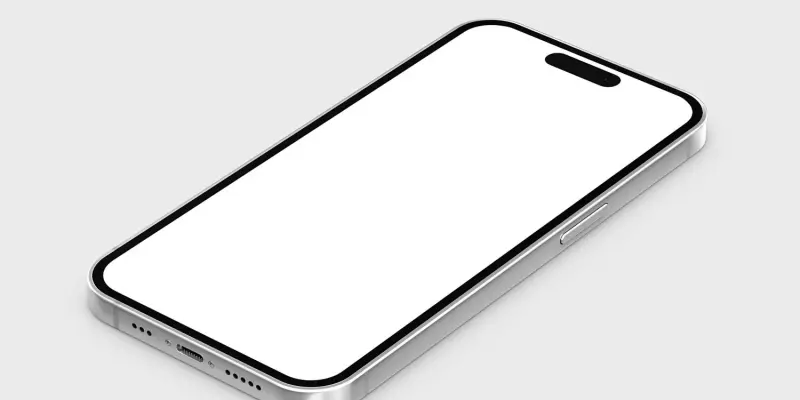At the heart of Apple’s 2025 Worldwide Developers Conference was the unveiling of a bold new design initiative dubbed “Liquid Glass.” This groundbreaking shift marks a significant transition across several of Apple’s software platforms, including iOS 26, iPadOS 26, macOS Tahoe 26, watchOS 26, and tvOS 26. Inspired by the substantial overhaul introduced with iOS 7 in 2013, Liquid Glass brings a transparent visual theme that significantly elevates the user’s optical interaction across devices. The introduction of this design reflects Apple’s commitment to creating a unified and aesthetically compelling ecosystem that appeals to both functionality and user experience.
iOS 26: The Future of Mobile Aesthetics and Functionality
Enhanced Visuals and Seamless Interactivity
With the developer beta for iOS 26 now available, the Liquid Glass design makes its debut as a central feature across the operating system. This innovation revitalizes key areas such as the Lock Screen, Home Screen, Control Center, and various apps. By infusing these elements with advanced optical qualities and a fluid visual experience, Apple has seamlessly integrated this design into the mobile interface. Noteworthy additions include a lock screen clock that adapts dynamically to its background, app icons reimagined with vibrant translucency, and navigation controls that transition effortlessly between light and dark modes. These visual enhancements not only refresh the device’s aesthetics but also foster an intuitive way for users to engage with their technology.
Communication and Productivity Improvements
Beyond its aesthetic revamp, iOS 26 introduces pivotal functional upgrades aimed at streamlining communication and boosting productivity. A groundbreaking call screening feature now filters unknown callers, offering users greater control over their interactions. Advanced spam detection tools enhance the user experience by minimizing distractions and disruptions. In response to the evolving digital communication landscape, Apple has also refined its group chat features, catering to the dynamic needs of modern-day users. These updates underscore Apple’s dedication to responding to user demands for both enhanced design and improved day-to-day usability.
iPadOS 26: Bridging the Gap Between Tablet and Desktop
Multitasking with a Desktop Flavor
iPadOS 26 makes a significant leap forward, bringing features long-anticipated by users who seek a more desktop-like experience on their tablets. With the incorporation of macOS-style multitasking capabilities, iPadOS 26 narrows the divide between mobile and traditional computing environments, facilitating a streamlined workflow. Key features such as windowing systems, a convenient menu bar, and an intuitive pointer system offer increased versatility within the iPad experience. This allows users to operate their devices with a level of productivity previously reserved for desktop systems. The stylized Liquid Glass motif weaves through these enhancements, marrying aesthetic appeal with functional utility.
Customization and User Control
iPadOS 26 empowers users with new ways to personalize and maneuver through their devices. This improved customization aligns with the overarching Liquid Glass theme, ensuring that all elements remain in harmony with Apple’s fresh visual language. Users now have the ability to resize windows and swiftly switch between apps, enriching their capacity to manage chores efficiently. These transformations not only elevate the aesthetic dimension of iPadOS but also amplify its applicability for power users, creatives, and everyday consumers seeking adaptable solutions within a cohesive interface.
macOS Tahoe 26: Unifying Apple’s Ecosystem with Liquid Glass
Cross-Device Connectivity and Coherence
With macOS Tahoe 26, Apple’s vision of a cohesive user experience takes shape, with Liquid Glass enhancing the harmony between devices. This comprehensive design across platforms not only strengthens the aesthetic uniformity but also ups the ante on functionality. By making Live Activities more accessible, reinvigorating the Spotlight search tool, and introducing a Phone App within macOS, Apple offers a more integrated and efficient computing environment. These refinements reflect a concerted effort to streamline interactions and augment the practical aspects of the user experience, fostering seamless connectivity within the Apple ecosystem.
Redefining User Interaction with Technology
Apple’s presentation at the conference laid bare a strategic commitment to enhancing user engagement through design. The rollout of Liquid Glass is a testament to Apple’s philosophy that beauty and functionality are intertwined. By prioritizing user intuition and ease of use, Apple has paved the way for technological advancements that feel both revolutionary and familiar. The integration of Liquid Glass across platforms denotes a conscious effort to deliver consistency in design language while simultaneously addressing functionalities that cater directly to user needs and expectations.
Into a Dazzling Era of Design Innovation
The central focus of Apple’s 2025 Worldwide Developers Conference was the introduction of a fresh design concept named “Liquid Glass.” This innovative approach signifies a major evolution across numerous Apple software systems, such as iOS 26, iPadOS 26, macOS Tahoe 26, watchOS 26, and tvOS 26. Drawing inspiration from the radical redesign initiated with iOS 7 back in 2013, Liquid Glass features a transparent visual style that greatly enhances the user’s visual engagement across all devices. This design innovation underscores Apple’s relentless pursuit of crafting a cohesive and aesthetically appealing ecosystem that seamlessly marries functionality with the user experience. The initiative seeks to ensure a more immersive interaction with Apple devices, integrating transparency to foster a deeper connection between technology and users. By converging elegance and practical utility, Liquid Glass is destined to transform the way consumers perceive and interact with the digital world in everyday use.

